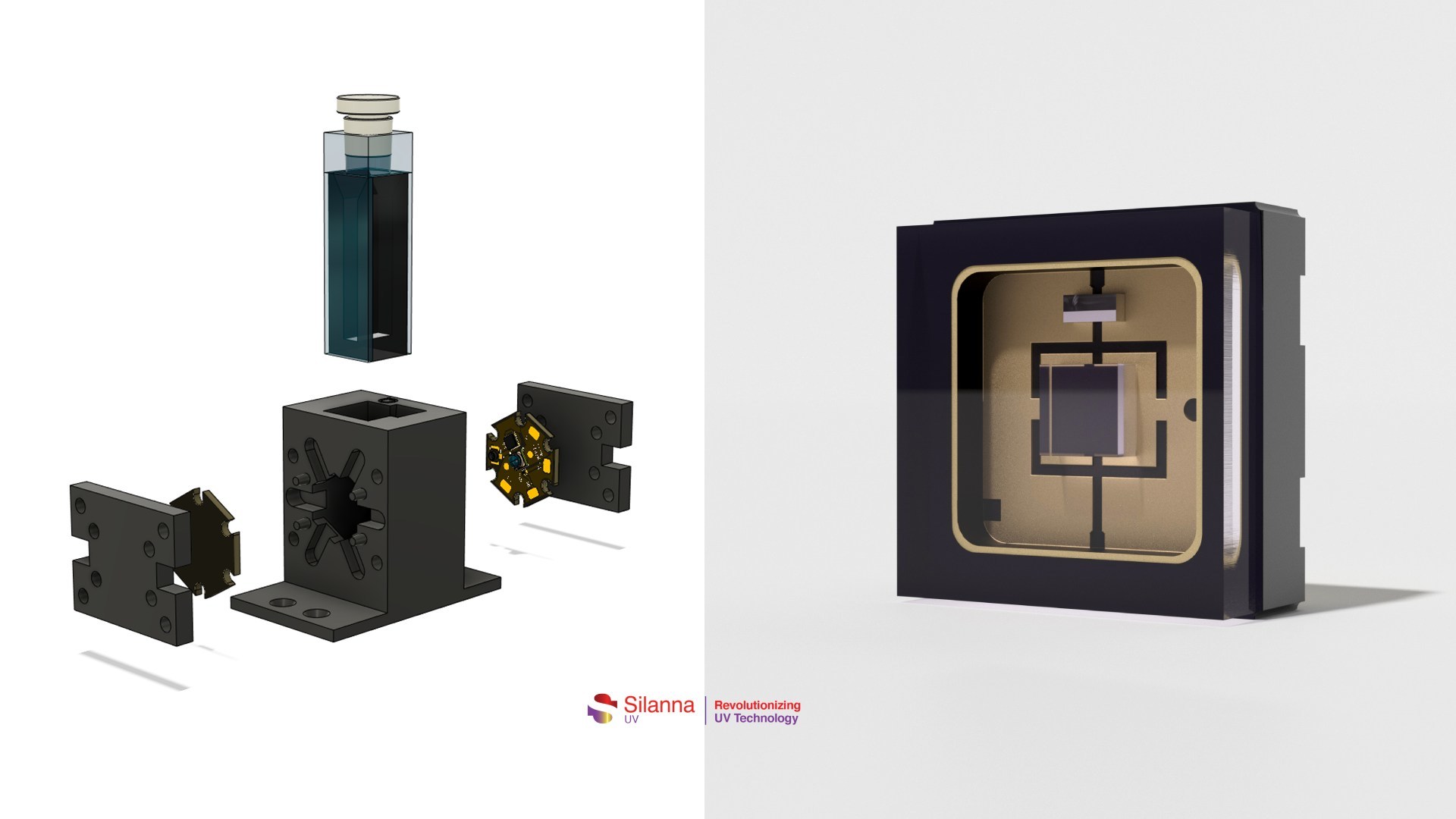
SF1 series UV-C LEDS: A better way to detect nitrate contamination in water
-
Nitrate contamination of drinking water is a growing global threat
-
Silanna UV’s new SF1 LEDs detect nitrates in water faster and cheaper
-
Full nitrate detector reference design available
-
Ideal for cost-effective, fast, reliable, low-power contamination detection
-
Based on new, patented ultraviolet LED manufacturing technology
Brisbane, Australia, 17th November, 2022 – Newly-developed ultraviolet LEDs from Silanna UV are ready to take Nitrate Sensing applications into a new era, promising cleaner and safer drinking water that is free from nitrate contamination. Silanna’s SF1 series of LEDs leverage the company’s patented short period superlattice (SPSL) technology that provides industry-leading performance and power output in the challenging 230nm-260nm UV range (Far UV-C and Deep UV-C). Silanna now provides a complete reference design for a nitrate detector based on this technology.
As well as nitrate detection, Silanna’s SF1 and SN3 UV LEDs are ideal for sterilization, water and gas sensing, instrumentation, and medical analyzers.
The increasing challenge of nitrate contamination in water
Nitrate contamination of drinking water is a growing threat around the world, with nitrates from agricultural, industrial and natural biological processes increasingly contaminating water supplies as populations grow and expand. Detection of nitrates traditionally relied on an expensive process in which broadband light generated by a UV lamp is passed through spectroscopy to extract the far UV-C wavelength needed for sensing.
Silanna’s SF1 series LEDs provide a far more cost-effective, compact, reliable, low-power alternative to traditional methods of nitrate detection – and, thanks to patented technology, now lead the industry. In particular, SF1 series UV-C emitters with a peak wavelength under 235nm and a Full-Width-Half-Max (FWHM) of 10nm are an ideal candidate for nitrate sensing applications.
Nitrate sensor reference design
To help users evaluate this new technology and develop products based on it, Silanna has created a nitrate sensing reference design featuring the company’s SF1 series LEDs. This module rapidly and accurately measures the nitrate content of a liquid sample.
The microcontroller-based reference design features a capacitive touch display, safety interlock, and compensates for thermal effects to maintain accuracy and avoid warm-up delay. The UV-C LEDs package’s built-in 30-degree parabolic lens eliminates the need of secondary optics, making the system even more compact and cost effective. The module requires less than a second to make a measurement, not only saving time, but also extending component lifetime to over 100,000 measurements, and the concentration of the nitrate is measured at a resolution of 0.01mg/L-N according to estimates.
For more information on Silanna UV’s technology and UV-C LED products can contact the Sales Team at sales_uv@silanna.com.
|
If you would like to know more details , please contact:
|












